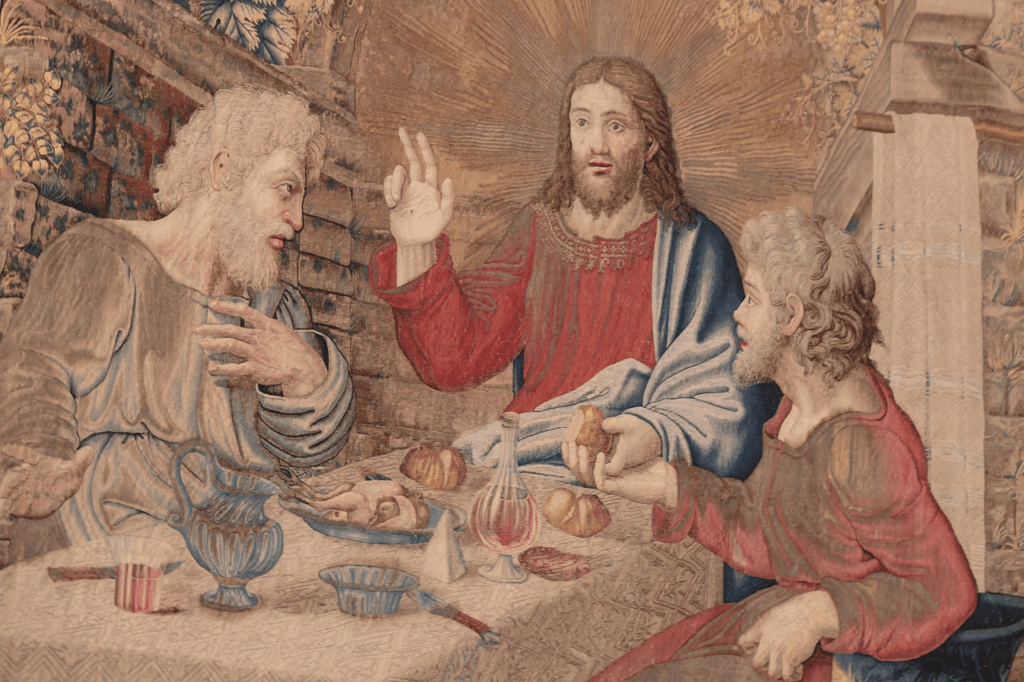The Walk to Emmaus is a spiritual retreat program that aims to deepen faith and strengthen Christian communities. Participants engage in prayer, worship, and fellowship, encouraging personal reflection and growth. However, some critics argue that the experience may resemble brainwashing, raising concerns about the methods used in such programs.
Understanding the Walk to Emmaus

The Walk to Emmaus, often referred to simply as Emmaus, is a three-day retreat experience based on the Christian faith. It was developed in the 1970s as part of the larger movement known as the Chrysalis community. The retreat is designed to enhance the spiritual lives of participants, strengthening their connection to God and their church community.
During the retreat, attendees participate in talks, group discussions, and activities that cover various aspects of faith, such as grace, love, and service. The structured environment encourages individuals to reflect on their spiritual journeys, allowing them to develop a deeper understanding of their relationship with God. Many participants report transformative experiences, leading to a renewed commitment to their faith and active involvement in their church communities.
The Walk to Emmaus is open to people from different denominations, making it an inclusive experience. The program is typically conducted over a weekend, with participants spending time in prayer, worship, and fellowship. The emphasis is on creating a supportive community where individuals can share their experiences and grow spiritually.
The Structure of the Retreat
The retreat is divided into several components, including talks given by laypeople and clergy, group discussions, and moments of personal reflection. Each talk covers a specific topic related to Christian faith and practice. These themes include God’s love, grace, and the importance of community. Participants are encouraged to engage in open discussions following each talk, promoting a deeper understanding of the material presented.
In addition to talks and discussions, the retreat features various spiritual practices, such as communal prayer, singing hymns, and sharing meals. These shared experiences foster a sense of belonging and community among participants. The structure is designed to create a safe and welcoming environment where individuals can explore their faith without fear of judgment.
While many participants leave the retreat feeling uplifted and spiritually renewed, some critics argue that the intensity of the experience can lead to feelings of dependency on the program. This has led to concerns about the potential for manipulation or coercion within the structure of the Walk to Emmaus.
The Potential for Misinterpretation

While the Walk to Emmaus is meant to be a positive experience for participants, it can sometimes be misinterpreted as a form of brainwashing. Critics argue that the emotional intensity of the retreat, combined with its structured environment, may lead individuals to adopt beliefs or behaviors that they might not have otherwise embraced.
The use of emotional appeals during the talks and discussions can create a powerful connection between participants and the material presented. While this can lead to meaningful insights and transformations, it can also raise concerns about the authenticity of these experiences. Some individuals may feel pressured to conform to group norms or beliefs, leading to questions about the integrity of their spiritual journeys.
Another factor contributing to these concerns is the length and intensity of the retreat. For many, the three-day experience is a significant time commitment. Participants may feel overwhelmed by the emotional and spiritual demands placed upon them, leading to feelings of vulnerability. Critics argue that this vulnerability can be exploited, resulting in a form of emotional manipulation that resembles brainwashing.
Comparing the Walk to Emmaus with Brainwashing
Brainwashing is generally understood as a process where an individual is subjected to intense psychological manipulation, often leading to a complete alteration of their beliefs and behaviors. It typically involves coercive tactics and a loss of autonomy. While some critics liken the Walk to Emmaus to brainwashing, it is essential to recognize the fundamental differences between the two.
In the case of the Walk to Emmaus, participation is voluntary. Individuals choose to attend the retreat, and they have the freedom to leave at any point. The program is not designed to manipulate or coerce participants into adopting specific beliefs. Instead, it aims to create an environment where individuals can explore their faith and deepen their relationship with God.
However, the emotional intensity of the experience can create a sense of pressure to conform. Participants may feel compelled to adopt the beliefs or practices discussed during the retreat, leading to concerns about the authenticity of their spiritual journeys. It is crucial for participants to remain aware of their own beliefs and values during the retreat, ensuring that their experiences are genuine and self-directed.
The Role of Community in the Walk to Emmaus
One of the critical elements of the Walk to Emmaus is the sense of community that develops among participants. This communal aspect can be both a strength and a source of concern. Support and fellowship can lead to profound spiritual growth, as individuals share their experiences and encourage one another in their faith journeys.
However, this sense of community can also create pressure to conform to group norms. Participants may feel compelled to adopt beliefs or practices that do not resonate with their authentic selves. This pressure can lead to feelings of disconnection or confusion, as individuals grapple with the expectations of the group versus their beliefs.
To mitigate these concerns, it is essential for participants to maintain an open dialogue about their experiences. Encouraging honest discussions about feelings, doubts, and personal beliefs can help ensure that the community remains a supportive environment rather than a space for coercion or manipulation.
Ensuring a Positive Experience
To ensure that the Walk to Emmaus remains a positive and enriching experience, several steps can be taken. First and foremost, participants should approach the retreat with an open mind while also remaining true to their beliefs and values. It is essential to engage in self-reflection throughout the experience, allowing for personal growth without compromising one’s authenticity.
Facilitators of the retreat also play a crucial role in creating a supportive environment. They should be aware of the potential for emotional manipulation and strive to foster open discussions about individual beliefs and experiences. Encouraging participants to voice their thoughts and feelings can help create a space of acceptance and understanding.
Finally, it is crucial for participants to remain grounded in their faith communities after the retreat. Continuing to engage with their local church or faith group can provide ongoing support and reinforcement of their beliefs. This connection can help individuals process their experiences and integrate the lessons learned during the retreat into their everyday lives.
Conclusion
The Walk to Emmaus is a powerful spiritual retreat that can lead to profound personal transformation and a deeper connection with faith. However, it is essential to approach the experience with awareness and caution. While the program is designed to be a supportive and enriching environment, the emotional intensity and group dynamics can raise concerns about potential manipulation or coercion.
By maintaining a focus on personal beliefs and engaging in open dialogue, participants can ensure that their experiences are genuine and meaningful. The Walk to Emmaus has the potential to foster spiritual growth and community, but it is crucial to remain vigilant against the risks of misinterpretation or emotional dependency.
FAQs
What should I expect during the Walk to Emmaus retreat?
During the Walk to Emmaus retreat, you can expect a structured program that includes talks, discussions, prayer, and fellowship. The environment is designed to encourage personal reflection and spiritual growth.
Is the Walk to Emmaus open to all denominations?
Yes, the Walk to Emmaus is open to individuals from various Christian denominations. The program aims to promote unity and shared experiences among participants.
How can I prepare for the Walk to Emmaus retreat?
Preparation for the retreat can involve prayer, reflection on your spiritual journey, and an open mind. It may also be helpful to discuss any expectations or concerns with your faith community.
What happens after the retreat?
After the retreat, participants are encouraged to stay connected with their faith communities and continue their spiritual growth. Many individuals also engage in follow-up groups to discuss their experiences and support one another.
Can I leave the retreat if I feel uncomfortable?
Yes, participation in the Walk to Emmaus is voluntary, and you can leave at any point if you feel uncomfortable. Your well-being and spiritual journey are the top priorities.






